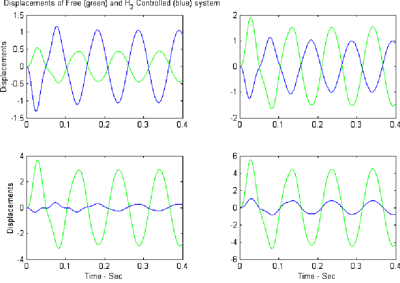
Computational & Technology Resources
an online resource for computational,
engineering & technology publications
engineering & technology publications
Civil-Comp Proceedings
ISSN 1759-3433
ISSN 1759-3433
CCP: 77
PROCEEDINGS OF THE NINTH INTERNATIONAL CONFERENCE ON CIVIL AND STRUCTURAL ENGINEERING COMPUTING
PROCEEDINGS OF THE NINTH INTERNATIONAL CONFERENCE ON CIVIL AND STRUCTURAL ENGINEERING COMPUTING
Edited by: B.H.V. Topping
Paper 114
Design of Smart Beams for Suppression of Wind-Induced Vibrations
G.E. Stavroulakis+*, G. Foutsitzi$, V. Hadjigeorgiou$, D. Marinova# and C.C. Baniotopoulos++
+Applied Mathematics and Mechanics, University of Ioannina, Greece
*Civil Engineering, Technical University of Braunschweig, Germany
$Material Science and Engineering, University of Ioannina, Greece
#Applied Mathematics and Informatics, Technical University of Sofia, Bulgaria
++Institute of Steel Structures, Civil Engineering, Aristotle University of Thessaloniki, Greece
Full Bibliographic Reference for this paper
G.E. Stavroulakis, G. Foutsitzi, V. Hadjigeorgiou, D. Marinov, C.C. Baniotopoulos, "Design of Smart Beams for Suppression of Wind-Induced Vibrations", in B.H.V. Topping, (Editor), "Proceedings of the Ninth International Conference on Civil and Structural Engineering Computing", Civil-Comp Press, Stirlingshire, UK, Paper 114, 2003. doi:10.4203/ccp.77.114
Keywords: smart beams, piezoelectric elements, robust control, wind effects on structures.
Summary
This paper studies vibration control of a beam with bonded
piezoelectric sensors and actuators and applications of the arising
smart structure for suppression of wind-induced vibrations. For general
thoughts about active structures the reader may consult the review
article [1]. The mechanical modeling of the structure and the
subsequent finite element approximation are based on the classical
equations of motion, as they are derived from Hamilton's principle, in
connection with simplified modeling of the piezoelectric sensors and
actuators. Both Timoshenko and Euler-Bernoulli technical beam
theories have been tested cf. [2]. Various control schemes have been
implemented in structural control (LQR, LQG, H2, and Hinfinity). The H<2
control design technique provides better robustness and allows for the
control objectives to be conveniently defined in time domain [3]. The
numerical simulation shows that vibration can be significantly
suppressed by the proposed controller.

|
References
- 1
- Sunar M., Rao S.S., "Resent Advance in Sensing and Control of Flexible Structures via Piezoelectric Materials Technology", Appl. Mech. Rev., vol.52, no.1, January 1999. doi:10.1115/1.3098923
- 2
- Aldraihem O.J., Wetherhold R.C., Singh T., "Distributed Control of Laminated Beams: Timoshenko Theory vs. Euler-Bernoulli Theory", Journal of Intelligent Material Systems and Structures, vol.8-February 1997.
- 3
- Foutsitzi G., Marinova D., Hadjigeorgiou E., Stavroulakis G., Finite Element Modeling of Optimally Controlled Smart Beams, 28th Summer School: Applications of Mathematics in Engineering and Economics, Sozopol, Bulgaria, June 8-11, 2002.
purchase the full-text of this paper (price £20)
go to the previous paper
go to the next paper
return to the table of contents
return to the book description
purchase this book (price £123 +P&P)